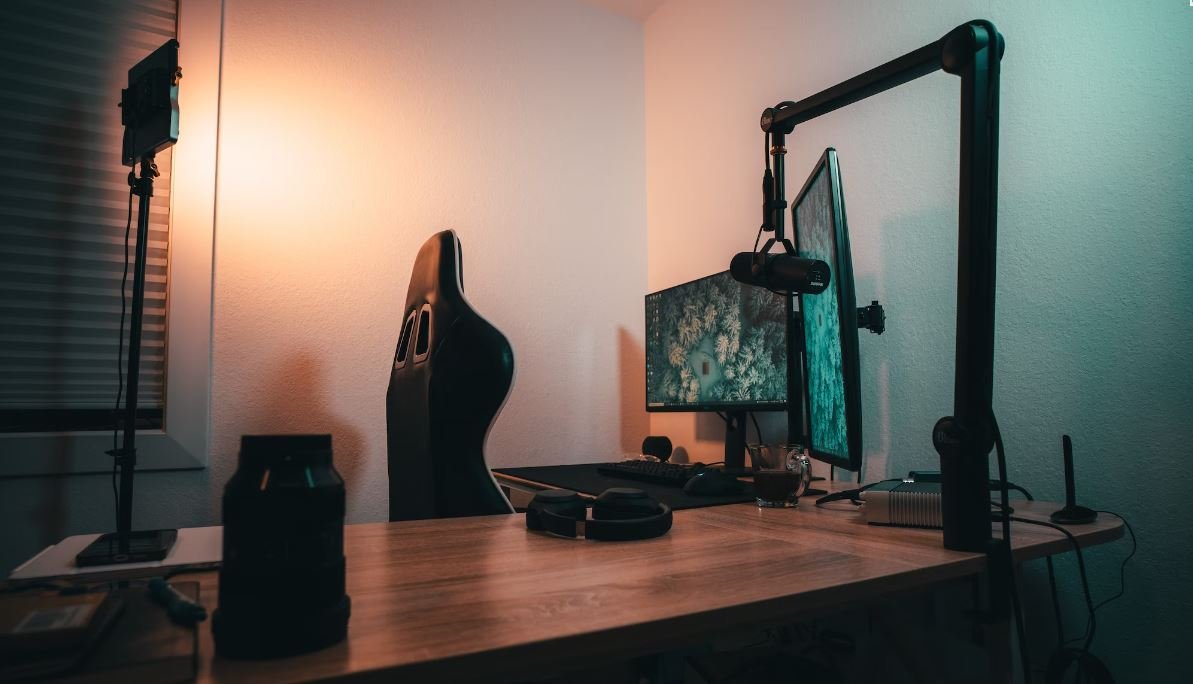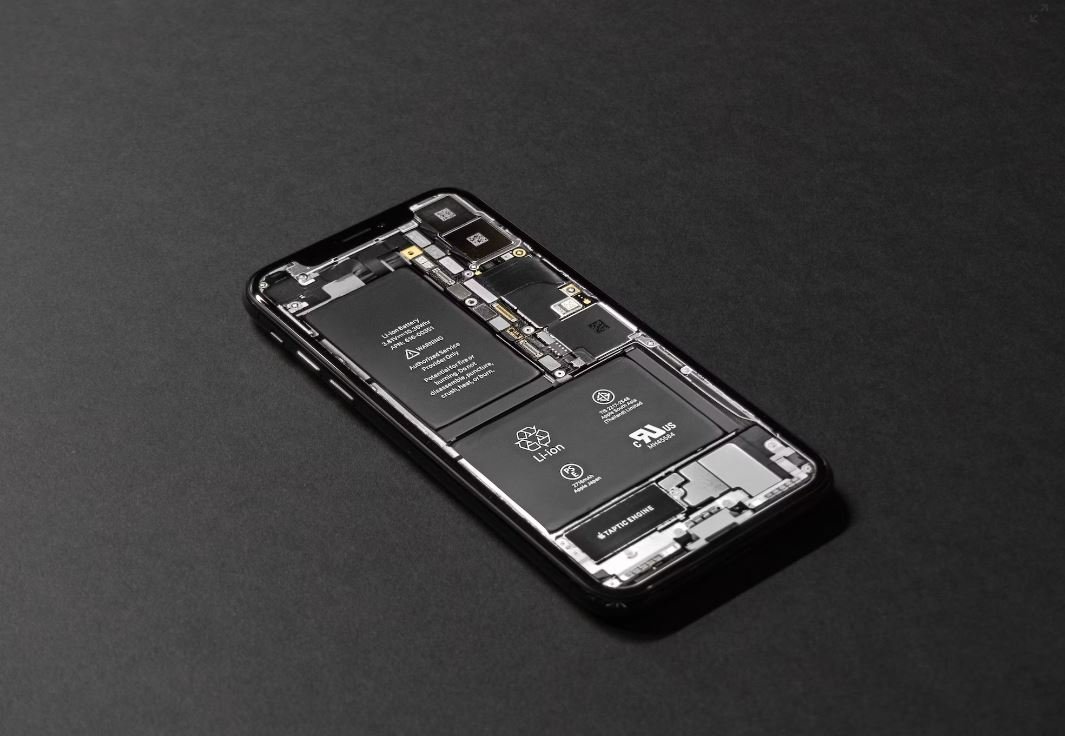Make or Makes Difference
Are you confused about when to use “make” and when to use “makes” in your sentences? In this article, we will provide a clear explanation to help you understand the proper usage of these words.
Key Takeaways:
- Understanding the difference between “make” and “makes” is crucial for correct sentence construction.
- “Make” is used when referring to the action of creating or producing something.
- “Makes” is the third-person singular form of the verb “make” and is used when the subject of the sentence is a singular noun or third-person singular pronoun.
- Always pay attention to the subject of your sentence to determine whether to use “make” or “makes”.
Make and makes are commonly used words that can cause confusion, especially for non-native English speakers. The usage of these words depends on the context of the sentence and the subject’s number. It is important to understand these differences in order to communicate effectively in English.
When using the word make, we are referring to the action of creating or producing something. It is typically used with plural nouns or pronouns, as well as in the first- and second-person forms.
For example:
- I make my own coffee every morning. (First-person singular)
- They always make their own costumes for Halloween. (Third-person plural)
- We need to make a decision soon. (First-person plural)
It is interesting to note that “make” remains the same regardless of the subject’s number in these cases.
On the other hand, when the subject of the sentence is a singular noun or a third-person singular pronoun, we use the word makes. This is the third-person singular form of the verb “make”.
For example:
- She makes a delicious cake every weekend. (Third-person singular)
- The company makes high-quality products. (Singular noun)
- He always makes the right decision. (Third-person singular)
It is fascinating to see how “makes” is specifically used with singular subjects, indicating that there is only one creator or producer involved.
Usage Examples
Here are some examples to illustrate the proper usage of “make” and “makes” in different sentence structures:
| Sentence | Subject | Verb | Example |
|---|---|---|---|
| First-person singular | I | make | I make my own breakfast every morning. |
| Third-person plural | They | make | They make beautiful artwork. |
| First-person plural | We | make | We make our own decisions. |
| Third-person singular | She | makes | She makes delicious cupcakes. |
| Singular noun | The company | makes | The company makes eco-friendly products. |
| Third-person singular | He | makes | He makes insightful observations. |
Practice Makes Perfect
Now that you understand the difference between make and makes, it’s time to put your knowledge into practice. Here are a couple of exercises to help solidify your understanding:
- Complete the following sentence with the correct form of “make” or “makes”:
She ___________ the best apple pies in town. - Choose the correct form of the verb for the following sentence:
They ___________ their own clothes for the fashion show.
By actively practicing and paying attention to the subject of your sentence, you will become more confident in using “make” and “makes” correctly.
Summary
In summary, understanding the difference between “make” and “makes” is essential for constructing grammatically correct sentences. By recognizing the subject’s number and choosing the appropriate form of the verb, you can convey your message accurately.
Remember to use “make” with plural forms and first- and second-person subjects, while “makes” is used with singular subjects. Keep practicing and soon it will become second nature to use these words correctly in your everyday English.

Common Misconceptions
Misconception: Make or Makes Difference is only about big actions
Many people believe that making a difference requires grand gestures or significant actions. However, this is a misconception as even small acts of kindness or small changes in behavior can make a difference in someone’s life or have an impact on a larger cause.
- Small acts of kindness can brighten someone’s day.
- Small changes in behavior, like reducing water usage, can make a difference in conserving natural resources.
- Small donations to charities, even as little as a few dollars, can collectively make a significant impact.
Misconception: Making a difference takes a lot of time and effort
Another common misconception is that making a difference requires a significant amount of time and effort. While some initiatives or projects may require more commitment, there are many ways to make a difference that can be done in a short amount of time or with minimal effort.
- Donating unused items to shelters or charities can be done quickly and easily.
- Spreading awareness about a cause through social media can be done in a matter of minutes.
- Volunteering for a few hours at a local community center or organization can make a difference in someone’s life.
Misconception: Making a difference is only for experts or professionals
Some individuals believe that making a difference is something only experts or professionals can do. This misconception often discourages people from taking action, thinking that their contribution wouldn’t be valuable. In reality, anyone can make a difference, regardless of their expertise or profession.
- Sharing personal experiences or stories can inspire and encourage others.
- Supporting friends or family members in need can make a significant difference in their lives.
- Engaging in acts of kindness towards strangers can create a positive ripple effect in society.
Misconception: Making a difference requires a large following or platform
Many people believe that making a difference can only be done if they have a large following or platform to reach a wider audience. While having a big audience can amplify one’s impact, it is not a prerequisite for making a difference. Even small-scale efforts can have a meaningful impact.
- Supporting local businesses can contribute to the economic growth of a community.
- Educating oneself about social issues and engaging in meaningful conversations with peers can promote awareness and understanding.
- Participating in community clean-up initiatives can improve the local environment.
Misconception: Individual actions don’t make a significant difference
Some individuals believe that their individual actions won’t make a significant difference in the world, so they choose not to take any action at all. However, this belief is incorrect as collective individual actions can create profound change and make a significant difference.
- Every vote in an election contributes to shaping the society and policy decisions.
- Choosing sustainable products or adopting eco-friendly habits collectively helps in preserving the environment.
- Providing emotional support or lending a listening ear to someone in need can have a substantial positive impact on their well-being.

Top 10 Most Common Causes of Stress
Stress is a common problem that affects people of all ages and backgrounds. In this table, we explore the top 10 causes of stress:
| Cause | Percentage (%) |
|---|---|
| Work-related issues | 38% |
| Financial pressure | 33% |
| Family problems | 26% |
| Health concerns | 21% |
| Relationship difficulties | 18% |
| Major life changes | 16% |
| Personal appearance | 11% |
| Social pressure | 9% |
| Time constraints | 7% |
| Media overload | 5% |
The Impact of Education on Lifetime Earnings
Earning potential often varies depending on educational attainment. This table highlights the correlation between education level and average lifetime earnings:
| Education Level | Average Lifetime Earnings |
|---|---|
| No high school diploma | $1,345,000 |
| Highschool diploma | $1,745,000 |
| Associate’s degree | $2,253,000 |
| Bachelor’s degree | $2,840,000 |
| Master’s degree | $3,490,000 |
| Professional degree | $4,512,000 |
| Doctoral degree | $5,354,000 |
Benefits of Regular Exercise for Mental Health
Exercise not only benefits physical health but also has a positive impact on mental well-being. Here’s what regular exercise can do for your mental health:
| Mental Health Benefits |
|---|
| Reduced symptoms of depression |
| Decreased anxiety and stress levels |
| Improved mood and self-esteem |
| Enhanced cognitive function |
| Increased production of endorphins (feel-good hormones) |
Country Rankings on Quality of Life Index
Quality of life varies significantly across different countries. This table displays the top 10 countries with the highest quality of life index:
| Rank | Country | Quality of Life Index |
|---|---|---|
| 1 | Switzerland | 194.11 |
| 2 | Norway | 193.51 |
| 3 | Denmark | 192.87 |
| 4 | Sweden | 191.42 |
| 5 | Finland | 190.22 |
| 6 | Germany | 188.65 |
| 7 | Netherlands | 188.32 |
| 8 | New Zealand | 187.62 |
| 9 | Austria | 186.54 |
| 10 | Luxembourg | 186.41 |
Environmental Impact Comparison of Transport Modes
Choosing the right transport mode can contribute to reducing our environmental footprint. Check out this table comparing the environmental impact of different transportation methods:
| Transport Mode | CO2 Emissions (grams/passenger-km) |
|---|---|
| Walking | 0 |
| Bicycling | 0 |
| Public Rail | 14 |
| Motorcycle | 62 |
| Hybrid Car | 82 |
| Car (average) | 136 |
| Air Travel | 285 |
Countries with the Highest Life Expectancy
Life expectancy varies considerably worldwide. This table showcases the top 5 countries with the highest life expectancy:
| Rank | Country | Life Expectancy (years) |
|---|---|---|
| 1 | Japan | 84.5 |
| 2 | Switzerland | 83.8 |
| 3 | Australia | 83.6 |
| 4 | Germany | 83.4 |
| 5 | Canada | 82.9 |
Benefits of Reading
Reading has numerous benefits for individuals of all ages. Take a look at the positive effects of reading regularly:
| Reading Benefits |
|---|
| Improves cognitive abilities |
| Enhances vocabulary and language skills |
| Reduces stress and promotes relaxation |
| Increases empathy and understanding |
| Improves memory |
Global Mobile Phone Usage Statistics
Mobile phones have become an integral part of our lives worldwide. This table presents the global statistics of mobile phone usage:
| Statistic | Details |
|---|---|
| Total number of mobile phone users | 5.28 billion |
| Percentage of population with mobile phones | 67% |
| Average daily time spent on mobile phones | 3 hours and 15 minutes |
| Most popular mobile phone brand | Samsung |
The Impact of Social Media on Mental Health
Social media’s influence on mental health has become a significant concern. Let’s explore the effects of excessive social media use in this table:
| Effects of Excessive Social Media Use |
|---|
| Increased feelings of loneliness |
| Negative body image and low self-esteem |
| Decreased attention span |
| Inadequate sleep patterns |
| Elevated stress and anxiety levels |
Throughout this article, we have examined various topics to showcase the difference that certain factors can make in our lives. From causes of stress to the impact of education and lifestyle choices, each table provides valuable insights into the importance of making intentional choices.
By understanding the impact of these factors, we can make more informed decisions to improve our quality of life and well-being. It is crucial to assess the data, acknowledge the significance, and take action accordingly. Remember, small changes can lead to remarkable differences.
Frequently Asked Questions
What is the make or makes difference?
The make or makes difference refers to the distinction or impact that a particular factor or variable has on a given outcome or situation. It involves identifying the specific element that contributes to a change or variation in a certain context.
How can I determine the make or makes difference in a situation?
To identify the make or makes difference in a situation, you need to analyze and compare different variables or factors that may influence the outcome. This can be done through careful observation, data collection, statistical analysis, and experimentation to isolate and assess the impact of each variable.
Why is it important to understand the make or makes difference?
Understanding the make or makes difference is crucial because it allows us to gain insights into causality, patterns, and relationships between variables. By knowing which factors are significant in driving change, decision-making processes can be improved, resources can be allocated more efficiently, and targeted interventions can be developed.
What are some common examples of the make or makes difference?
Examples of the make or makes difference can be found in various fields and scenarios. For instance, in marketing, understanding the factors that influence consumer behavior can help companies tailor their advertising strategies. In healthcare, identifying the determinants of disease progression can aid in developing effective treatments and preventive measures.
How can I measure the make or makes difference?
Measuring the make or makes difference involves utilizing appropriate research methods and statistical techniques. These may include regression analysis, correlation studies, experimental designs, or surveys. The choice of measurement method depends on the nature of the variables and the research objectives.
Are there any limitations to determining the make or makes difference?
Yes, there are certain limitations when attempting to determine the make or makes difference. These limitations can include confounding variables, sample size constraints, selection bias, and the availability of accurate and reliable data. It is important to address and account for these limitations to ensure the validity and generalizability of the findings.
Can multiple factors contribute to the make or makes difference simultaneously?
Yes, in many cases, multiple factors can contribute to the make or makes difference simultaneously. It is common for complex situations to involve interactions between different variables that collectively influence the outcome. Understanding these interactions and their combined effects is essential to comprehensively analyze and explain the make or makes difference.
How can I use the information about the make or makes difference in decision-making?
By incorporating information about the make or makes difference into decision-making processes, you can make more informed choices and optimize outcomes. For example, if you identify that a particular factor has a significant impact on productivity, you can prioritize actions and allocate resources accordingly to improve efficiency in that area.
What role does statistical analysis play in determining the make or makes difference?
Statistical analysis plays a critical role in determining the make or makes difference. Through statistical techniques, researchers can quantify and assess the strength and significance of relationships between variables. This enables them to draw meaningful conclusions and make evidence-based decisions regarding the impact of specific factors.
Can the make or makes difference change over time?
Yes, the make or makes difference can change over time due to a variety of factors. External influences, evolving circumstances, and new variables may alter the significance and impact of certain factors on a particular outcome. Therefore, it is essential to regularly reassess and update our understanding of the make or makes difference to adapt to changing contexts.





